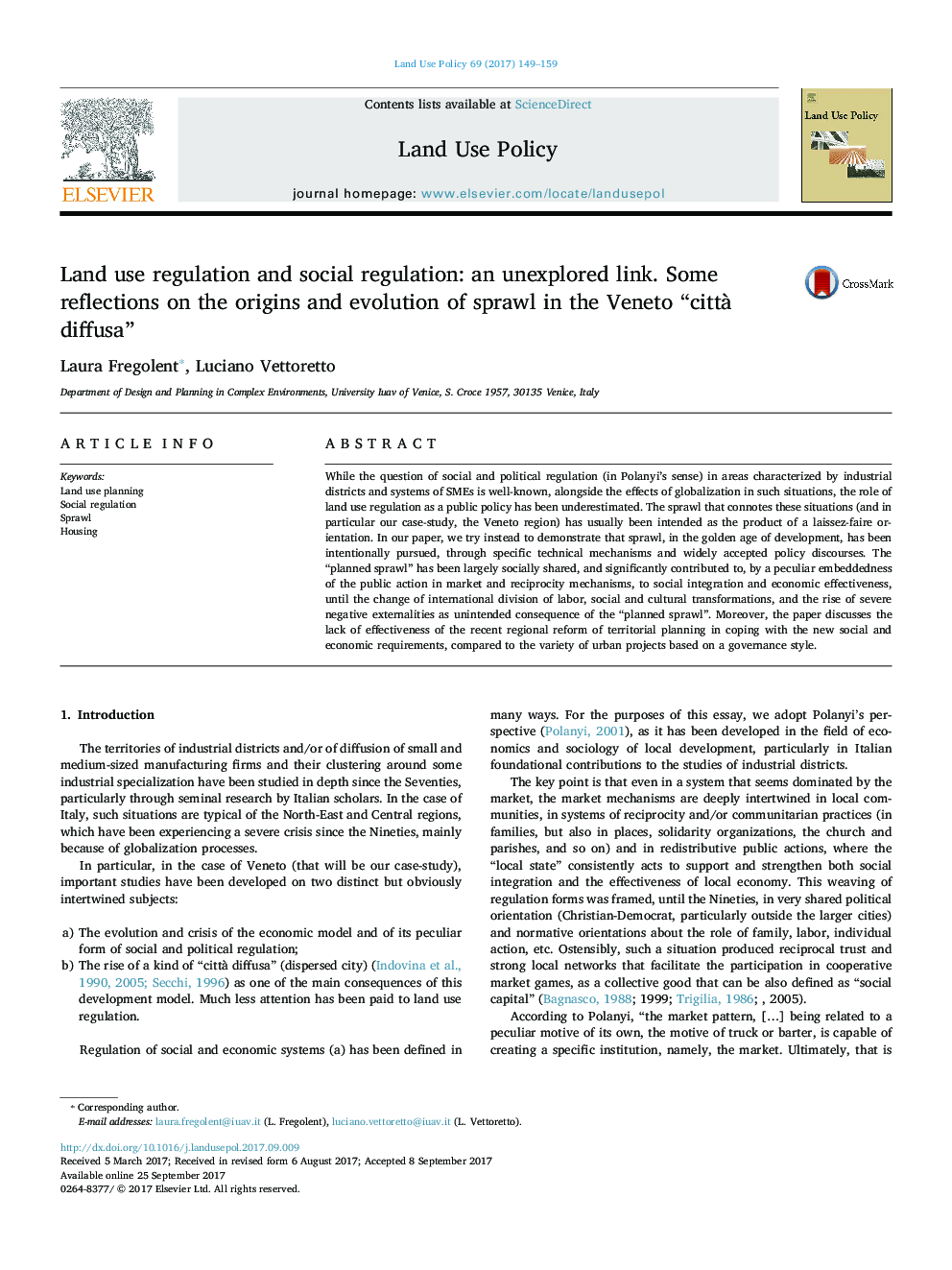| Article ID | Journal | Published Year | Pages | File Type |
|---|---|---|---|---|
| 6460338 | Land Use Policy | 2017 | 11 Pages |
â¢Veneto “città diffusa” is the product of a mix of regulations forms.â¢Sprawl has been intentionally pursued by local governments.â¢Sprawl has been consistent with social, cultural and political local characters.â¢Planned sprawl was based on specific land use tactics and strategies.â¢The recent regional planning reform does not seem capable to cope with new issues.
While the question of social and political regulation (in Polanyi's sense) in areas characterized by industrial districts and systems of SMEs is well-known, alongside the effects of globalization in such situations, the role of land use regulation as a public policy has been underestimated. The sprawl that connotes these situations (and in particular our case-study, the Veneto region) has usually been intended as the product of a laissez-faire orientation. In our paper, we try instead to demonstrate that sprawl, in the golden age of development, has been intentionally pursued, through specific technical mechanisms and widely accepted policy discourses. The “planned sprawl” has been largely socially shared, and significantly contributed to, by a peculiar embeddedness of the public action in market and reciprocity mechanisms, to social integration and economic effectiveness, until the change of international division of labor, social and cultural transformations, and the rise of severe negative externalities as unintended consequence of the “planned sprawl”. Moreover, the paper discusses the lack of effectiveness of the recent regional reform of territorial planning in coping with the new social and economic requirements, compared to the variety of urban projects based on a governance style.
